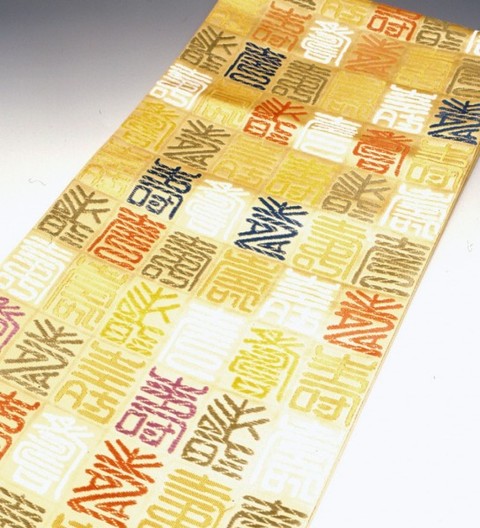
西陣という名は、室町時代の応仁の乱の時、西軍が本陣とした場所に、乱の後、職人が集まって織物をしたことから付けられました。織物の歴史としては、平安時代以前に秦氏によってもたらされた織技術にまで遡ることができます。西陣織は宮廷文化を中心に、織文化の担い手として発展してきました。

The name Nishijin was given to these textiles because weavers settled in the area which had been the headquarters of the west camp or Nishijin at the time of the Onin War. Lasting eleven years, these hostilities took place during the Muromachi period (1392-1573) from 1467 to 1477, when lords from many provinces divided into east and west factions. The history of Nishijin textiles themselves, however, can be traced back to weaving techniques fostered by the Hata family before the Heian period (794-1185), and this accumulation of skills developed as a weaving art centered on the culture of the imperial court in Kyoto.
Nishijin textiles are yarn dyed figured cloths made in relatively small amounts but have the distinction of being able to offer a wide variety of different products, including a tightly woven tapestry cloth, damask, brocade, ikat, and pongee. The multicolored figured cloths in particular boast a rich and dazzling use of fine yarns to produce equally rich patterns. Many of these are made into kimono or obi, and tapestry. There are now 1,759 firms employing 22,258 people, among whom there are 329 government recognized Master Craftsmen sustaining one of Japan's most distinguished crafts.